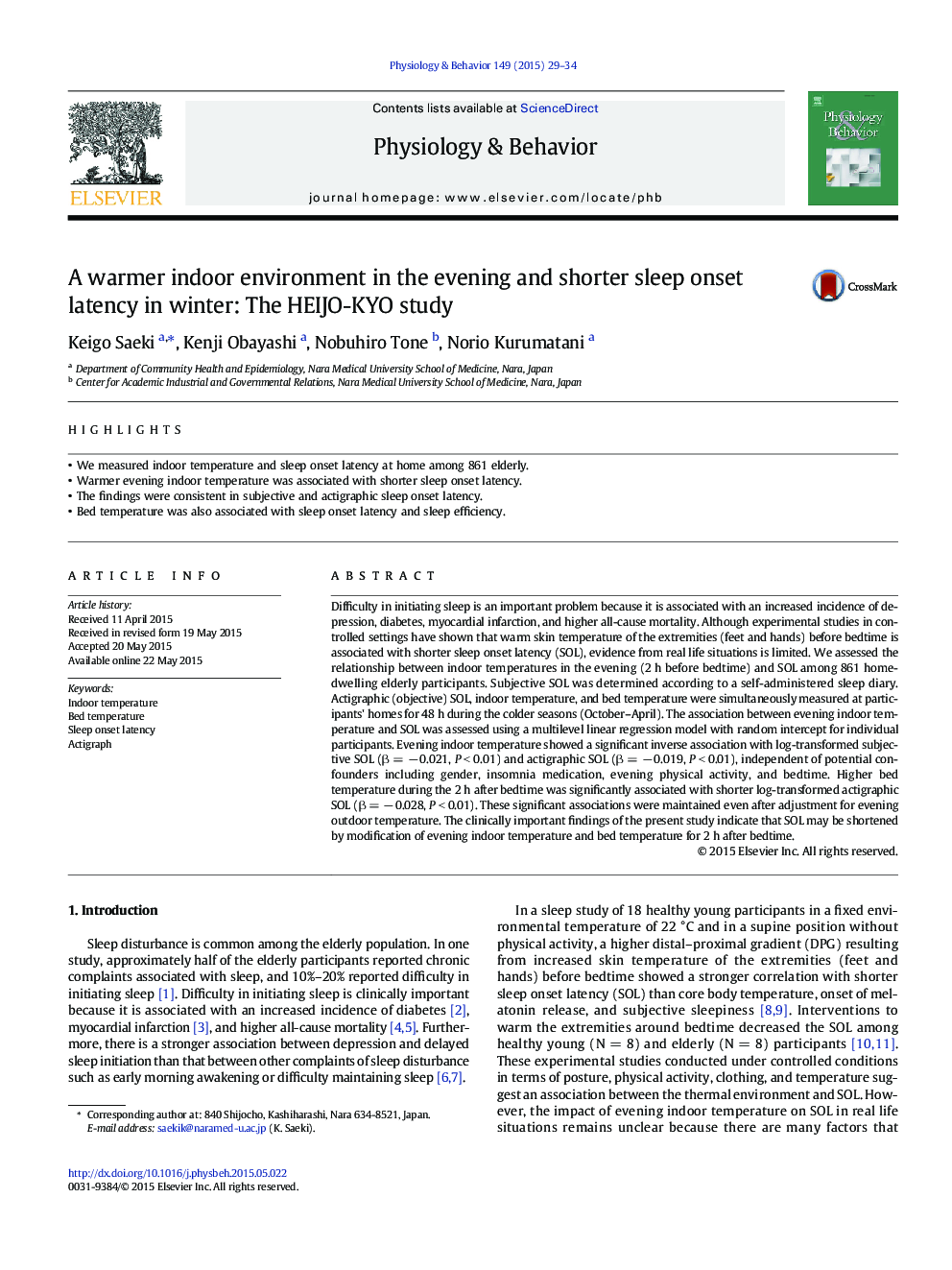| Article ID | Journal | Published Year | Pages | File Type |
|---|---|---|---|---|
| 5923539 | Physiology & Behavior | 2015 | 6 Pages |
â¢We measured indoor temperature and sleep onset latency at home among 861 elderly.â¢Warmer evening indoor temperature was associated with shorter sleep onset latency.â¢The findings were consistent in subjective and actigraphic sleep onset latency.â¢Bed temperature was also associated with sleep onset latency and sleep efficiency.
Difficulty in initiating sleep is an important problem because it is associated with an increased incidence of depression, diabetes, myocardial infarction, and higher all-cause mortality. Although experimental studies in controlled settings have shown that warm skin temperature of the extremities (feet and hands) before bedtime is associated with shorter sleep onset latency (SOL), evidence from real life situations is limited. We assessed the relationship between indoor temperatures in the evening (2 h before bedtime) and SOL among 861 home-dwelling elderly participants. Subjective SOL was determined according to a self-administered sleep diary. Actigraphic (objective) SOL, indoor temperature, and bed temperature were simultaneously measured at participants' homes for 48 h during the colder seasons (October-April). The association between evening indoor temperature and SOL was assessed using a multilevel linear regression model with random intercept for individual participants. Evening indoor temperature showed a significant inverse association with log-transformed subjective SOL (β = â 0.021, P < 0.01) and actigraphic SOL (β = â 0.019, P < 0.01), independent of potential confounders including gender, insomnia medication, evening physical activity, and bedtime. Higher bed temperature during the 2 h after bedtime was significantly associated with shorter log-transformed actigraphic SOL (β = â 0.028, P < 0.01). These significant associations were maintained even after adjustment for evening outdoor temperature. The clinically important findings of the present study indicate that SOL may be shortened by modification of evening indoor temperature and bed temperature for 2 h after bedtime.
